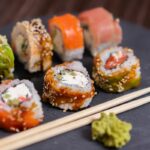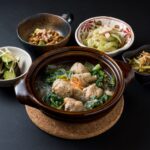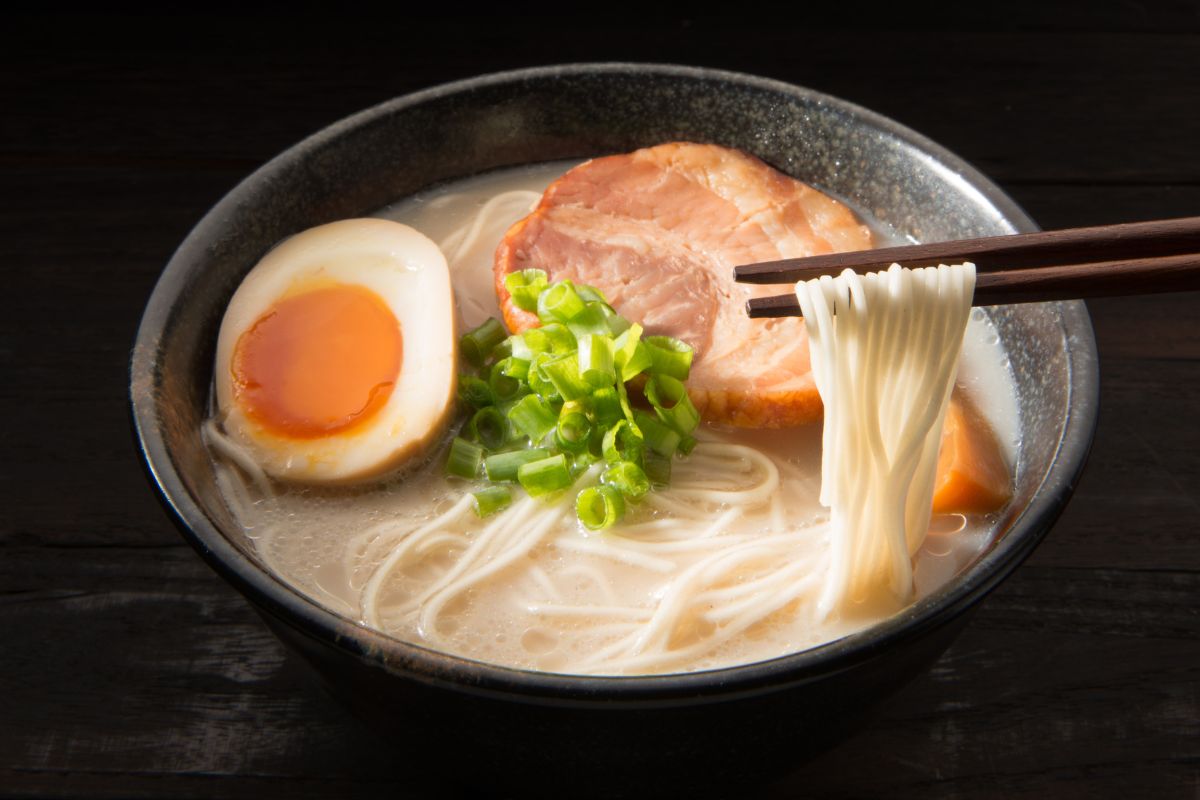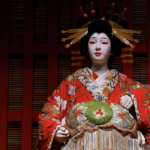Sushi was originally developed in the Edo period as a means of preserving fish in fermented rice (narezuchi). However, it quickly became a popular dish all around Japan, and has since then evolved into what it is today.
While sushi was primarily enjoyed by workers on the rivers, it didn’t stay the same. When it grew in popularity, recipes were changed to suit different dietary requirements and preferences.
![What Sushi Has No Fish? [Vegetarian Sushi Explained]](https://justaboutjapan.com/wp-content/uploads/2023/03/What-Sushi-Has-No-Fish-Vegetarian-Sushi-Explained.jpg)
Original or traditional sushi is made up of rice and raw fish (as well as a variety of other additions), but this was not suitable for everyone.
So, alterations were made to create sushi that could be enjoyed by all – including vegetarians and vegans! In this guide, we will explain vegetarian sushi and detail which kinds of sushi has no fish.
Vegetarian Sushi
It’s important to note that lots of sushi can involve egg, which makes it vegetarian-friendly, but not vegan-friendly.
Not only that, but if you are vegan, you should take measures to avoid chirashizushi, as this can contain animal products in the form of bonito flakes and dashi. Which are dried fish flakes and fish broth, respectively.
Tamagoyaki Nigiri
A tamagoyaki is a slightly sweet and fluffy rolled omelet. This food is incredibly popular in Japan, and a slice is often served as nigiri (a rice ball). The nigiri is then wrapped in some thin nori (seaweed), and served!
Please note that some restaurants will add dashi to the dish, However, you should be able to request your dish without it if you would like to avoid fish products.
Takenoko Chirashizushi
Chirashizushi is essentially a serving of scattered sushi in a bowl. You can expect the base to be seasoned sushi rice, which is then covered with takenoko (bamboo shoots) and simmered in a broth.
As it simmers, the bamboo shoots become succulent, more flavorsome, and soften up. The reason why it is considered vegetarian and not vegan is that the broth may contain a fish-based dashi or be topped with bonito flakes, so be sure to check beforehand.
Vegan Sushi
Thankfully, sushi has evolved so much that vegans can fully enjoy it too. It helps that sushi can be prepared so simply, as you only have to top the seasoned rice with a vegan component of your choice.
Nigiri
To prepare vegan nigiri, a ball of seasoned rice only needs to be topped with a vegetable, but no eggs are involved. That could be some delicious Shiitake mushroom for a strong, savory taste and a juicy texture, if you like!
Nasu nigiri uses eggplant, which can be grilled for a soft texture or pickled for a tangy taste. Avocado is rising in popularity and a simple form of nigiri just involves an avocado slice which is lightly seasoned with some salt.
You could also use carrot, asparagus, peppers, peas, or anything else you feel like trying out to make vegan sushi.
Maki-Zushi
Maki-zushi is a common form of sushi, and its versatility means it can easily be prepared as vegetarian or vegan.
The name actually means rolled sushi, so all you need to do is lay out a roll of nori seaweed on a bamboo mat, spread over some seasoned rice, and add your choice of toppings.
This could be vegetables like cabbage, takuan (pickled radish), or kampyo (pickled gourd) which is then rolled up and sliced into bite-sized pieces.
You have absolute freedom when it comes to this, so be sure to try out different things if you make it at home.
Kappa Maki
One popular vegan sushi roll is kappa maki which simply involves some thin, freshly sliced cucumber. You can typically expect the sushi to be included as a starter or even a palate cleanser.
After your kappa maki, you can expect more flavorful, decadent sushi to be served. This is sushi in one of its purest forms, and it should taste refreshing.
Shinko/Tekuan Maki
As shinko is the general term for pickles, it can prove to be a popular type of sushi. Tekuan typically comes in a brown or bright yellow color and comes with a crunch and a tangy flavor. This could also be seen as a palate cleanser due to how refreshing it tastes.
Kampyo Maki
If you have had a heavy meal, you may want to include a batch of kampyo maki. This sushi includes pickled gourd, which is known to help digestion. If it is served, it is typically done so at the end of a meal and should taste sweet.
Ume Cucumber Shiso Makizushi
Another sweet variety of sushi that can be seen as a palate cleanser is a well-composed combination of ingredients. That means involving ume paste (Japanese pickled plum), shiso (perilla herb), and crunch from sweet cucumber.
This is another variety of sushi that you can expect at the middle of a meal due to its freshness and sweet taste.
Natta Temaki
A temaki is a type of handroll where a sheet of nori seaweed is folded with seasoned rice and fillings. For vegan sushi, you can experiment with vegetables, though natta temaki is a specialty.
This particular sushi, or a handroll or natta, includes fermented soybeans. It can be sticky once the handroll is handed to the customer, but the sticky texture can be a delight, plus it does have health benefits.
Seaweed Gunkanmaki
A seaweed gunkanmaki literally means a battleship roll due to its appearance. While maki sushi will typically involve a nori seaweed wrapping, this variation involves even more seaweed.
The seaweed proves to be a flavorful ingredient which is rich in nutrients and ideal for vegans or vegetarians.
The wakame (seaweed salad) is dressed with mirin, soy sauce, sesame seeds, red chili, and sesame oil which is then packed on top of the seasoned rice.
Inarizushi
This sushi may not look like your typical sushi rolls and is prepared differently. Inarizushi is created from a sweet tofu skin which is filled with seasoned rice and then fried.
Occasionally, sesame seeds are sprinkled on top or incorporated into the filling. These fried pouches are also used at Shinto shrines as an offering to the gods. They are said to be a preferred snack of the fox, the gods’ messenger.
Final Thoughts
As sushi has evolved, it has taken on different forms and included a range of fillings. This has meant that it can be enjoyed by everything, including vegetarians and vegans.
Sushi is prepared simply and by substituting seafood, fish, and meat, you can create maki or nigiri that everyone can enjoy. Other types of sushi have always been vegan, including inarizushi, seaweed gunkanmaki, and natta temaki.
Ordering vegan and vegetarian sushi should not be difficult in many sushi restaurants. Simply let the server or chef know your requirements beforehand and let them create something truly memorable.
Frequently Asked Questions
As sushi can be prepared simply, it remains popular with vegans. That could mean maki prepared with vegetables or just pieces of vegetables placed on seasoned rice as nigiri.
It could be takenoko chirashizushi, seaweed gunkanmaki, or natta temaki.
Other options for vegetarians include seaweed salad, edamame (a dish formed from cooked soybeans), vegetable tempura, or naruto rolls which use thin cucumber strips as a low-carb alternative.
California rolls typically include a filling of cucumber and avocado but also crab or imitation crab.
To create vegetarian versions of California rolls, simply replace the crab with a vegetable or leave it out. To replace the crab, you could use hearts of palm, silken tofu, or thin strips of carrot.
- 16 Best Websites To Watch Japanese Movies With English Subtitles - May 11, 2023
- Is ZIPAIR The Best Airline For Traveling To Japan? - May 11, 2023
- Ryu Murakami Vs Haruki Murakami – Which One Should You Read? - May 11, 2023





![How Many Types Of Sushi Are There? [Definitive Guide] How Many Types Of Sushi Are There? [Definitive Guide]](https://justaboutjapan.com/wp-content/uploads/2023/05/How-Many-Types-Of-Sushi-Are-There-Definitive-Guide-150x150.jpg)


